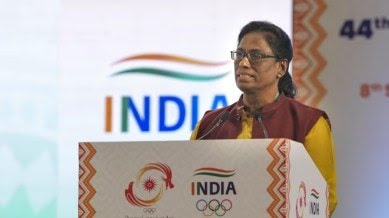The Great Indian Sports Administration Mess: A Deep Dive into Mismanagement and Corruption
The intricate and frequently chaotic management of sports in India has long been a problem, and it is referred to as “The Great Indian Sports Administration Mess.” Ineffectiveness, corruption, poor management, and excessive bureaucracy have plagued Indian sports administration. The growth of athletes, the marketing of different sports, and the general infrastructure required to produce talent on a worldwide scale have all been hampered as a result.
Key Issues:
- Political Interference: Politicians or people with minimal athletic backgrounds govern many sports organizations in India. As a result, the welfare of athletes has been subordinated to political or personal concerns.
- Lack of professionalism: In India, amateurs or people without sufficient management expertise have frequently handled sports administration, which has resulted in poor decision-making, inefficiency, and an inability to meet the demands of coaches and athletes.
- Corruption and Nepotism: Reports of selection bias, siphoning of funds, and favoritism indicate that corruption is a serious problem in Indian sports federations. Concerns about biased picks and the opaqueness of various procedures have been raised by athletes regularly.
The Great Indian Sports Administration Mess: A Deep Dive into Mismanagement and Corruption
- Fragmented Structure: There is a lack of coordination and cohesive national sports development plans as a result of India’s sports governance being split up among multiple federations and associations, many of which function independently.
- Inadequate Funding and Infrastructure: Many regions of India still lack sufficient funding for sports training, even with efforts to upgrade facilities. Funding is frequently mishandled or fails to reach the local levels, which hinders the development of talent.
- Over-centralization: Athletes, coaches, and regional organizations have little say in the decisions that are made by a small number of people at the top. Local sports development and creativity are stifled by this top-down strategy.
High-profile Examples:
- The Indian Olympic Association (IOA), which is in charge of regulating India’s Olympic participation, has been beset by political squabbling, frequent leadership changes, and transparency problems.
- Cricket vs. Other Sports: While cricket benefits greatly from infrastructure and sponsorship, other sports, particularly those played at the grassroots level, frequently receive little support. Although the Board of Control for Cricket in India, or BCCI, runs mainly on its own, its success draws attention to the disparities in how other sports are governed.
- Athletes’ performances have been impacted by a number of scandals in football, hockey, and wrestling, including power disputes, financial mismanagement, and inadequate administration.
Consequences:
The Great Indian Sports Administration Mess: A Deep Dive into Mismanagement and Corruption
- Talent Drain: Due to a lack of support and opportunity, talented athletes frequently relocate abroad or change careers.
- International Underperformance: Due to inadequate infrastructure and governance, India performs poorly on international stages in a number of sports, despite its potential.
The Great Indian Sports Administration Mess: A Deep Dive into Mismanagement and Corruption
- Athlete frustration: Inadequate training facilities, a lack of funding, and administrative roadblocks are common problems for athletes, which depresses them and impairs their performance.
Recent Developments:
Programs like Khelo India and Target Olympic Podium Scheme (TOPS), which seek to find and assist young talent and elite athletes, have made some headway. However, the greater administrative inefficiencies continue to impede these attempts.
Solutions:
The Great Indian Sports Administration Mess: A Deep Dive into Mismanagement and Corruption
- Professionalization of Sports Bodies: Efficiency can be increased by bringing in managers, coaches, and administrators with experience and knowledge of the intricacies of sports governance.
- Increased Accountability: Regular audits, more robust anti-corruption legislation, and transparency in the operations of sports organizations can all help to curb misconduct.
- Grassroots Development: Better scouting techniques combined with investments in grassroots sports and infrastructure can aid in the early detection of talent.
- Empowering Athletes: Sports federations should give athletes more influence over decision-making procedures so that their opinions are heard.
Indian sports administration’s “mess” remains a major barrier to the nation’s development as a sporting superpower, and it can only be resolved with structural change and increased professionalism.

